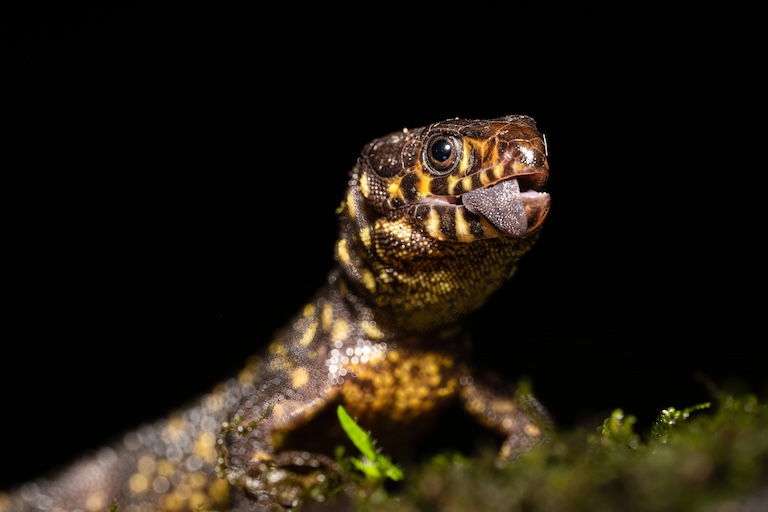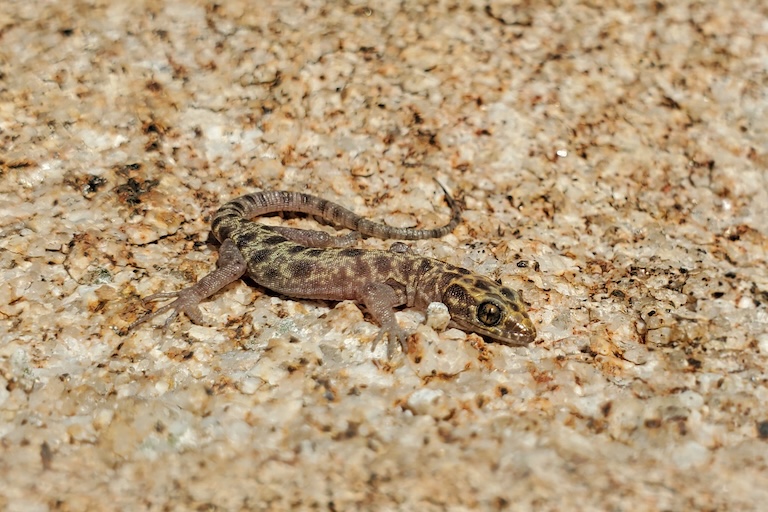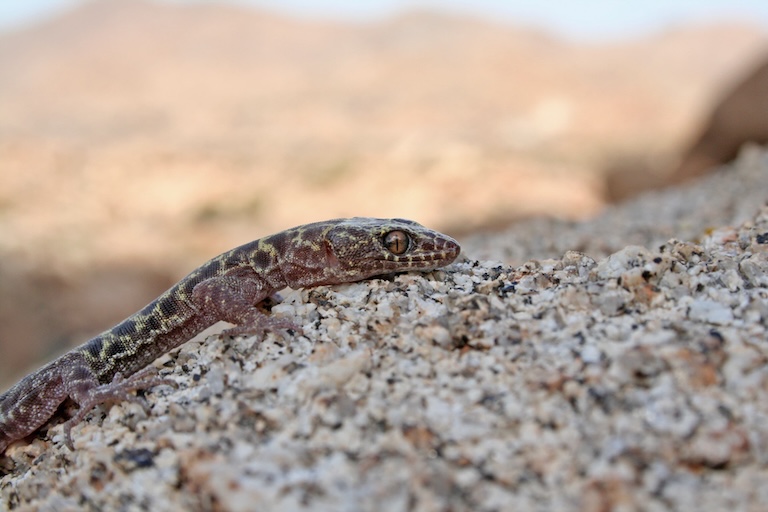Xantusia Profile
As our evolution carried us away from fish and towards a more Nikki Minaj phenotype, one thing we developed in the process was extended brood care.
Back when we could simply “set and forget” a cloud of spores, our parenting instincts consisted merely of finding the right stream or crevice and squirting them out as quickly and as secretively as possible.
Reptiles generally sit somewhere on this spectrum between those carefree days of spurting caviar into the water column and the 18 or so years of biological and financial parasitism we suffer now, with lizards typically much closer to fish in their approach – but some rare exceptions show a remarkably familiar approach to their children.
One such lizard is an animal that sounds like it belongs in The Never-Ending Story: Xantusia.

Xantusia Facts Overview
| Habitat: | Varied, mostly dry brush, savanna |
| Location: | North America and Mexico |
| Lifespan: | 9+ years |
| Size: | Up to 7cm (2.75 in) long, with a tail of the same length |
| Weight: | Up to 1.3 g (0.5 oz) |
| Colour: | Usually olive, greyish, or brown with light brown or black spots |
| Diet: | Mostly insects, sometimes some plant matter |
| Predators: | Birds, small mammals, and larger lizards |
| Top Speed: | Not known |
| No. of Species: | 14+ |
| Conservation Status: | Those listed are Least Concern, but assessments are mostly out of date |
Interesting Xantusia Facts
1. They’re Night Lizards
Xantusia is a genus of around 14 or so species of lizards in the skink clade. It’s called Scincomorpha, and it’s thought to have been around for 170 million years or so, originating from a time when the South of England was being tormented by a six-metre theropod called Megalosaurus and reptiles like Marmarospondylus were experimenting with being even more enormous.
This is around the time of the earliest confirmed lizard fossil, so the clade may well be one of the earliest there is, and has therefore been filled mostly by extinct species. Today, it’s made up of skinks, plated lizards, girdled lizards and the so-called Night Lizards.
Night lizards are a family of small to medium lizards split into three genera. Xantusia is one of them and makes up almost half of the species.
They’re specially evolved to live in small cracks, which may well be explained by the aforementioned 6-metre theropods they originated around. Regardless, it’s served them so well that they’re named for being nocturnal, despite the fact that they’re not.

2. They’re not night lizards
Many, if not most or even all species in Xantusia are so secretive that the big apes studying them assumed they were nocturnal. Later, other big apes studied them better and discovered that they’re just really good at hiding.
They do reduce on their diurnal activities during the peak of the summer heat, and will come out at night, but are starting to emerge as more daytime and crepuscular lizards that just keep to themselves pretty well.
They have small ranges of broken habitats, and interestingly, the various species appear to be really quite isolated from one another. 1
3. They live all over the place
All species of Xantusia appear to be New World lizards and span a range from California through Mexico, but the species themselves don’t appear to overlap much at all.
Multiple species appear to have independently evolved to look similar to one another, rather than evolved from a common morph, and their small ranges appear as isolated circles on a map.
For example, Xantusia, wigginsi (whose name sounds like a contestant on University Challenge), is primarily found in California. Xantusia bezyi lives around Phoenix, Arizona; Xantusia riversiana is found on the Channel Islands off the coast of California, and Xantusia sanchezi is native to the Tequila region of Mexico and its vicinity.
This may well all turn out to be yet another blind spot in the literature, considering how little is known about them and, as we’ll soon discuss, how many surprises they seem to present to science. 2
4. They breed slowly
There are several weird things about these lizards. First off, they’re flat. This is maybe the least weird thing, since they clearly evolved to live in a crack, but it’s worth a mention. Then, their eyes don’t have eyelids, but instead are covered in a fixed membrane like those of a snake.
But most starkly contrasting with most lizard species is their breeding strategy.
These lizards don’t lay many eggs. In fact, they don’t lay any. They hatch them inside their bodies and give birth to live young. And these young are very few: only as many as one or two in some species.
To top this off, it takes up to three months to make this little brood, and so the reproductive cycle of these little lizards is incredibly slow when compared to most of their kind. They may take several years from this point to reach sexual maturity and repeat the cycle, which is quite a similar strategy to that big ape we mentioned earlier. 3
5. They live dangerously
That path to maturity is flanked with danger. Almost every mature lizard in this genus has lost its tail at least once on the way, which goes to show that it works well as a defence mechanism.
Males are territorial and will battle it out to create their boundaries, so they have each other to worry about, too, but perhaps most remarkably, these animals are showing a level of sociality previously unexpected of lizards.
6. But they stick together
When an animal gives birth to live young, it’s far more likely that those fresh, slimy little offspring will require a bit of attention before sending them off into the wild yonder. This leads naturally to extended brood care in many species, and in some, the trade-off between lots of low-maintenance young and one really expensive but very good one, is a good deal that results in kids still calling to ask for money, 20 years later.
In some species of Xantusia, these sprogs stick around with their parents and siblings for many years, all living together under the same debris. But it’s not clear why. The parents don’t help the youngsters feed, so the advantage to having them around must come from elsewhere.
This isn’t unique to Xantusia, but it is rare. Only 20 or so species of lizard are known to do this sort of thing, and as you’d perhaps expect, most of these also give birth to live young.
Still, the precise advantages and mechanisms of this cooperative behaviour remain a fun little mystery to be solved! 4

Xantusia Fact-File Summary
Scientific Classification
| Kingdom: | Animalia |
| Phylum: | Chordata |
| Class: | Reptilia |
| Order: | Squamata |
| Family: | Xantusiidae |
| Genus: | Xantusia |
| Species Name: | 14+ |
Fact Sources & References
- Baird(1859 “1858”), “Desert Night Lizard – Xantusia vigilis”, CaliforniaHerps.
- (2007), “Xantusia sanchezi”, IUCN RED LIST.
- Zweifel et al (1966), “The ecology of a population of Xantusia vigilis, the desert night lizard. American Museum novitates ; no. 2247”, American Museum of Natural History.
- (2010), “Family ties bind desert lizards in social groups”, Science Daily.
